There’s a lot of confusing information out there about how fitness can change once you’ve had a baby. Here we clear things up.
There is no bigger wake-up call than the difference between how a woman pictures herself as a mom and the actual reality of the situation. Set aside all of the “I’ll definitely do X, Y, or Z as a parent” claims—especially when it comes to exercise.
Postpartum fitness will likely be an entirely different ball game than you anticipated. (Just look at star trainer Emily Skye, whose pregnancy journey was totally different than she planned.) Even the best-intentioned new moms may find that their fitness takes a backseat when they have a new little one in the house. Here, some need-to-know facts about postpartum exercise that may not be on your radar.
1. Your core will be stretched—or even separated.
Unsurprisingly, one of the biggest differences between your pre-baby workouts and postpartum exercise lies in your core. One 2015 study suggests that virtually all women experience diastasis recti (when the right and left abdominal muscles separate) at the end of pregnancy and that up to 39 percent still have some level of separation at six months postpartum. (Related: Kelly Rowland Gets Real About Diastasis Recti)
Diastasis recti aside, “most women are surprised by just how different their core feels once baby has arrived,” says trainer Maura Shirey, a certified pregnancy fitness educator and owner of Bodies for Birth. “The core remains overstretched and the woman is left with a belly that feels very different. Women will describe feelings of vulnerability, disconnection, absence, vacancy, and nonexistence when referencing how their postpartum core feels in the early days.” Combined with a weakened pelvic floor, this can make returning to fitness quite challenging for new moms, since core strength is vital for overall health and basic fitness. Shirey recommends a focus on strengthening the transverse abdominis (the deepest muscles in your core) to regain strength and stability. (Try these abs exercises that can help heal diastasis recti or go see a physical therapist or trainer who specializes in postpartum training.)
2. Every labor and healing experience is different.
“Postpartum recovery time is different for every woman,” says Gina S. Nelson, M.D., fellow of the American College of Obstetricians and Gynecologists and ob-gyn at Kalispell Regional Medical Center. “My impression, based on experience alone, is that your pre-pregnancy level of fitness is the biggest determinant of how you’ll do in postpartum recovery.” If you have good fitness habits and a degree of conditioning beforehand, you’ll likely have an easier transition back to fitness after giving birth. “That said, the vast majority of women will be able to resume all normal activities, including exercise, by six weeks postpartum,” she says.
There are several complications that can interfere with postpartum exercise, including “postpartum depression, c-section, postpartum hemorrhage, excess weight gain in pregnancy, pubic bone symphysis, and diastasis recti,” says Dr. Nelson, but all of these situations have solutions. A six-week post-partum check-up is the standard, but Dr. Nelson says you shouldn’t wait that long if you suspect something is wrong. “Many caregivers now are seeing patients at one or two weeks postpartum to identify problems early,” she says. Ideally, your doc will bring up the topic of exercise and give the go-ahead to get active again. But you should also have questions ready for your six-week visit and can ask specifics about returning to workouts that you may have been doing pre-baby.
Even without complications, Dr. Nelson suggests starting exercise “gradually and gently with much more mindfulness than before.” She says women should use the first three months of postpartum exercise to get their bodies used to working out again and not to make gains. For example, runners can start with walking, then walk-jogging.
3. You’ll experience brand-new aches and pains.
You hear all about relaxin (the hormone that helps loosen joints for labor) during pregnancy, but it actually stays in your system well beyond the birth of your baby. “Some sources believe that relaxin can stay in the body for up to 12 months after weaning,” says Shirey. This means your joints remain looser than usual. That lack of stability means your body is more prone to aches, pains, and injury.
Your new lifestyle could result in some aches too: “Motherhood can be a very ‘reactionary’ time, where we’re not slowing down to think about how we’re moving and positioning our bodies because there are needs that feel (and often are) more urgent (baby is crying, needs a diaper change, is hungry, etc.),” says Shirey. “You find yourself hanging out in super-uncomfortable positions until a leg or foot goes numb, with a full bladder, in an attempt to keep baby sleep.” She recommends focusing on alignment both during exercise and in everyday life.
 Photo: Fizkes / Shutterstock
Photo: Fizkes / Shutterstock
4. There are emotional challenges, too.
Postpartum depression (PPD) has gained a lot of attention in recent years—and rightfully so, since the American Psychological Association estimates one out of every seven new mothers will experience PPD. Even women without diagnosable depression will likely experience hormonal shifts and possible mood swings as a new mom. (Emily Skye and Kate Middleton have both shared their personal experiences with the “post-baby blues.”)
“I witness this being a very emotional time for many women at some point or another,” says Shirey. While many women experience some mild mood changes during or after the birth of a child, 15 to 20 percent of women experience more significant symptoms of depression or anxiety, according to Postpartum Support International. Symptoms can appear any time during pregnancy and within the first year after childbirth. (Here are some signs and symptoms of PPD to keep an eye out for.)
While PPD or general postpartum mood swings may lead to a lack of interest in exercise, Dr. Nelson says working out will help improve your mood and boost confidence—which is especially important when you’re bombarded with crazy expectations of what your post-baby body and fitness should look like.
“I often find that there are very unrealistic expectations about what postpartum fitness should look like,” says Shirey, “I credit this to social media and the overall lack of good information found on the internet. With a general emphasis on ‘getting your body back’ postpartum and Instagram images of celebrities in waist trainers wearing their skinny jeans with a 6-week-old in tow, it can be overwhelming to discern what’s realistic for postpartum recovery.”
5. Sleep is as important as ever.
Sure, your new little bundle of joy will sleep about 20 hours per day at first, but that happens in several increments. This means most mothers have trouble getting enough consecutive hours of sleep to feel well-rested and to feel like they have the energy to work out.
“This can be a bit of a ‘catch-22,'” says Shirey. “Exercise has the potential to provide more energy, but it also has the potential to be completely depleting—especially when you’re already sleep-deprived.” Exercise should not add to exhaustion, so listen to your body and consider less-strenuous workouts when necessary. “One day, a higher intensity walk including some hills might feel great,” she says. “On another day, when feeling particularly fatigued, some stretching and breathing work might be the right fit.”
6. It takes a village.
One potential barrier to postpartum exercise is the fact that baby needs a place to be while you work out. Your days of grabbing your gym bag and heading out the door without a second thought are history. Now, you have three options: work out with baby (which often means your workout takes a backseat), pay for childcare (some moms are not comfortable with a stranger babysitting early on), or leave baby with your partner or another trusted family member or friend. This means your support system is key. “A disorganized family life where there is inadequate help is a big barrier to resuming exercise,” says Dr. Nelson. (Take a peek at these mommy-and-me fitness classes that actually give you a solid workout.)
7. Jogging strollers come with caveats.
Before becoming a mom, most female runners probably think they’ll just load up the stroller and their annual half marathon schedule won’t need to budge a bit. But there are some things to consider. First, do your research and make sure your stroller is actually built for jogging. (Believe it or not, there are strollers that have “jogging” in the name but aren’t suitable or safe for jogging.) Just like any baby product, there are options in varying price ranges. But expect a jogging-appropriate stroller to set you back more than its non-jogging counterparts.
In addition, Shirey says you should check with your baby’s pediatrician and your jogging stroller’s manufacturer to find out when your little one can safely tag along on a run. Most babies aren’t ready until they’re 6 to 8 months old. After all of the above, “They can be surprisingly challenging to push and get used to using,” says Shirey, “so it’s best to be patient, take it easy to start and focus on alignment/core strength while working with this extra resistance.” (This Pilates stroller workout can be a great place to start.)

Photo: Tomsickova Tatyana / Shutterstock
8. Breastfeeding burns calories, but it’s not a workout.
Nursing may not count as strength or cardio, but breastfeeding and making milk does demand a large amount of metabolic resources, says Dr. Nelson: “Breastfeeding requires an additional 300 calories above that required at the end of pregnancy,” she says.
Because you burn calories from breastfeeding (but it doesn’t necessarily count as exercise), you may notice the scale dropping while your clothes still don’t fit the way they did the last time you were at that weight. Shirey says that most women experience some degree of de-conditioning during pregnancy. She recommends slowly and methodically progressing resistance training to build or rebuild strength and muscle tone. (Related: This Woman’s Heartbreaking Confession About Breastfeeding Is #SoReal)
Very strenuous workouts can actually impact breast milk too, though your supply should stay intact as long as you’re eating enough and drinking enough water. Dr. Nelson recommends consuming extra calories and increasing water intake by one or two liters per day while nursing.
“Beyond sheer calories and hydration, I know of nothing about working out that diminishes milk volume,” says Dr. Nelson. Studies show that regular exercise at moderate to high intensity does not alter the quality or quantity of breast milk, but that extremely intense anaerobic exercise (read: jumping, sprinting, etc.) may alter the taste of milk due to physiological byproducts of exercise (such as lactic acid) and may impact your baby’s nursing behavior, according to a review published in Clinical Obstetrics and Gynecology.
9. Take it easy and know it’s worth the effort.
With all of these challenges and precautions, it’s still worth it to carve out time for exercise as a new mom. “When women resume workouts after a baby is born, they often comment on how much it means to them,” says Dr. Nelson. “The time they spend on themselves takes on a heightened importance which they cherish.”
There are so many benefits to postpartum exercise, says Dr. Nelson. “I encourage new mothers to be patient with themselves, their babies, and their families. I would like them to be self-accepting and to give themselves permission to take time for a workout once they have recovered. They should be encouraged that it will be good for them and good for their family too.”


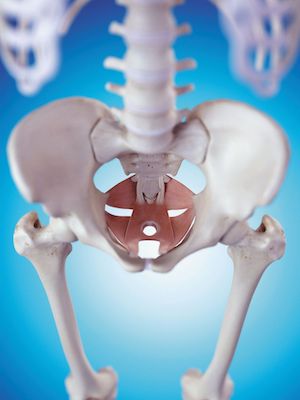
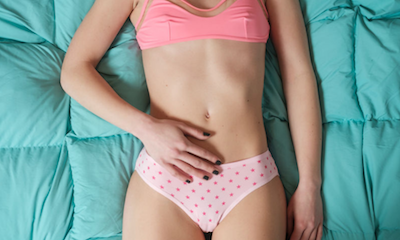

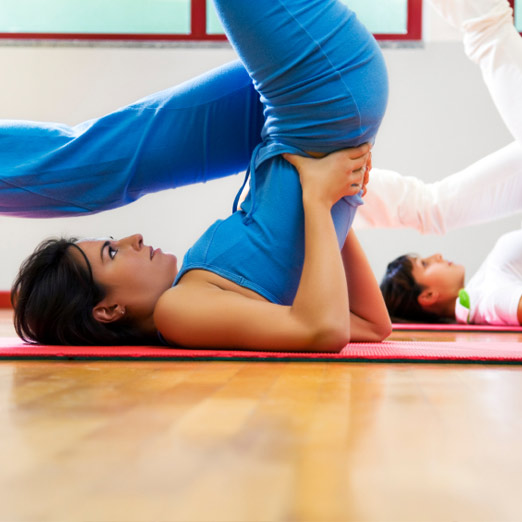


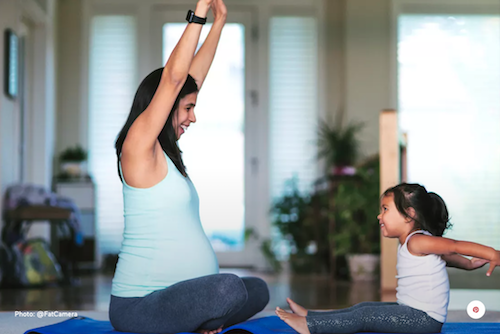




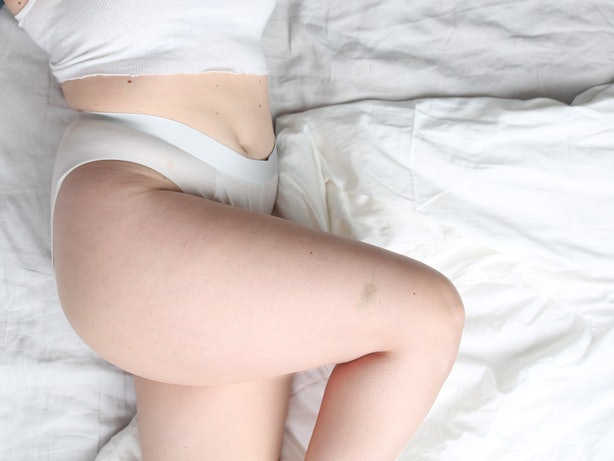









 Photo: Fizkes / Shutterstock
Photo: Fizkes / Shutterstock